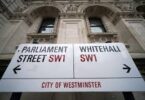Rachel Kleinfeld
US President Joe Biden’s new admi-nistration has inhe-rited a series of astounding challenges. But it was also handed at least one opportunity—the Global Fragility Act (GFA) passed in late 2019 with an unusual amount of bipartisan and civil society support. Its goal was to improve global security and reduce the threat of conflict spillover by crafting a holistic way of working with fragile states. Whether the GFA’s new approach is considered a success will hinge on the achievements of the first set of countries in which it is launched. Achievement can’t be determined by partner country selection alone. Failure, however, can be—some governme-nts are so uninterested in reform that their selection will betray all the hard work put into crafting the GFA. Choosing the right partners matters.
How to help weakened states?
The Global Fragility Act was conceived to address the problem that since the September 11 terrorist atta-cks, the United States has tried to shore up unstable, fragile states through short-term aid, stabilization, security assistance, and cooperation without meaningfully addressing underlying governance issues in these places. The costs of this reactive strategy have been immense and its res-ults underwhelming. Today al-Qaeda and its newer in-carnations such as the self-proclaimed Islamic State control more territory and likely kill more private citizens annually than died on September 11, 2001.1 Mea-nwhile, the number of stable democracies has been plummeting for the last fifteen years, with 2020 the y-ear of greatest decline, acc-ording to Freedom House.
Though the United States has shifted its security focus from fragile states to “great power competition,” the list of territories that are under threat has changed less than this shift would suggest. The world’s great powers are increasingly competing in and through fragile states. Russia has used Syria to establish a beachhead in the Middle East and fight a proxy war with the United States. In Africa, China has used bribery in countries such as Chad and Uganda—two of the states with the highest scores in the 2020 Fragile States Index—to gain diplomatic and economic advantage.
The Global Fragility Act offers a way to avoid a simplistic strategy on state weakness and a race to the bottom in which great power competition leads the United States to support corrupt or brutal countries simply to keep them from leaning toward China or Russia. It recognizes that weak states are not simply low on capacity, but that their problems are inherently political. Their governments do not passively suffer from weakness; their political elites have created weakness—dividing societies, stealing from state and aid coffers, and often using armed groups to ensure their own protection from other elites and from the social unrest fueled by their policies and rhetoric. The GFA recognizes that helping these countries is less about providing them with money and technical know-how, and more about a politically savvy response in which both sides hold each other to account over the long term with the goal of rebuilding each fragile state’s relationship with its own society. The key question now is whether implementation of the act can live up to its important mandate.
Picking the right country mix
The Global Fragility Act provides $1.15 billion to dedicate to five partner countries or regions over ten years. In a world of rising protest, governance failures exacerbated by the coronavirus pandemic, and democratic recession, how should these partners be chosen?
Don’t do it
First, some options should be taken off the table. Some fragile states, no matter how in need and worthy their societies are of help, are not in a place where outside resources directed through their governments can bolster reform. In fact, it can make their situations worse. They are leaky cups whose leaders are enlarging the cracks as fast as the United States and other donors are pouring in help. Money, technical assistance, and diplomatic attention do not address, and can even exacerbate, the problems of government illegitimacy, corruption, and collusion with violent groups that make these states unstable.
Somalia, South Sudan, and much of the Sahel, for example, are “political marketplaces,” in the terminology of the London School of Economics’ Conflict Research Programme. Political power in these countries is just another asset that can be obtained through cash or violence. Different groups use every external input to gain a bit of upper hand while grappling for power within a transactional kaleidoscope. Foreign countries offering bribes and enabling corruption, those proffering humanitarian aid, and companies with resource contracts further enable elites to rely on external money rather than their own people for support, so they all worsen the governing situation regardless of their motives. No elite can afford to demobilize its private army or institutionalize its administration because it would lose control within a deadly system that (though allegiances within it change from day to day) maintains a logic and continuity that is extremely stable even across different regimes. These countries are not amenable to the Global Fragility Act’s partnership model. Agreements are inherently unstable in these systems, and so are the elites that would sign them. Even if a deal could be signed and a leader remained in power long enough to uphold it, a partnership agreement wou-ld be worthless. Transform-ation into a less fragile state does not fit the incentives structure of these regimes—honestly implementing such an agreement would cost the ruling elites their power and likely, their lives.
Other weak states, such as Honduras or Nigeria, appear less turbulent and thus seem to have higher “capacity.” But many of them have governments in which key state institutions and/or security forces (though often internally divided) have portions that are in league with the forces that are weakening the country.2 Often, their leaders also benefit from endemic corruption that creates social unrest, opens space for government complicity with terrorists or criminals, and enables Chinese and Russian manipulation. For example, President Juan Orlando Hernández of Honduras has been indicted in the United States for drug trafficking that implicates the military and police at the highest levels.
The state’s security institutions have been used to concentrate power in just a few hands, transforming the government into a virtual drug cartel that funnels profits to the top. No aid compact from the United States could provide enough of an incentive to convince a government engaged in such “privilege violence” to unravel a personally lucrative operation on this scale.
In states with inimical situations, the US government should not try for partnership under the GFA but instead should try to constrain other countries and commercial actors from stirring the pot. These states benefit from a United States that partners with their people, not their governments. Significant aid should be directed toward civil society, while the United States uses diplomatic and international tools in a containment strategy to both quell international fallout and keep these governments from being too predatory at home. How can US policymakers determine whet-her a state falls into one of the two categories above? The quickest method is a fast assessment of its security-sector governance. The State Department recognized the importance of this arena once before with its Security Governance Initiative. Today, its Bureau of Political-Military Affairs has a new and well-conceived evaluation framework at the ready. Because the security sector is the one arena that leaders in such states cannot afford to professionalize, if security sector governance is at the lowest end of the scale, it is a good indicator that a country is not ready for partnership.
Hard but worth it: New governments with a window of opportunity
Change in the most fragile states can only emerge after a significant upheaval, when the United States must help reformers make use of the window of opportunity.
This yields another category of countries—those that have just been through a major societal or political disruption, and have a chance to create change thanks to new governments trying to pull the country out of fragility, win popular support by delivering real gains, and change power relationships such that the previous elite-protecting status quo cannot be reconstructed. In places where there is such a political opening and where the incentives of the new government and the US government align, there is the possibility of a rare confluence—a moment where the United States does not want reform more than the government (as is so often the case) and can effectively support the aspirations of people hungry for change.
These are still hard countries to change, but they can yield the greatest success stories. As in Georgia upon the ascension to power of Mikheil Saakashvili in 2004 or Colombia under Alvaro Uribe from 2002 to 2010, a change in governance when society is pushing for reform can take a state from the brink of failure to a much more stable (if far from perfect) place with remarkable rapidity. However, as these two cases suggest, such leaders are frequently not well-meaning reformers. They are often egotists with both reform-oriented and authoritarian instincts, who pull their countries out of fragility only to push them toward other governance failures. They cannot be given a blank check, but they are perfect subjects for the GFA’s partnership model, which requires long time horizons and mutual, ongoing accountability.
New governments typically have about eighteen months to two years to break from an embedded system before former powers regroup. Some opportunities have thus been missed recently.
For example, in Ethiopia the window of opportunity that opened in April 2018 when Abiy Ahmed came to power is closing with the recent outbreak of internal violence, and in Sudan the momentum for change following the April 2019 coup is ebbing. Such windows can be hard to spot—few would have predicted Sudan’s regime to fall when it did. But it is possible to identify cases where they might open, however unlikely this may seem. For example, most of the candidates in November’s presidential election in Honduras are likely to retain the existing system should they win. But it is possible that the right mix of carrots and some carefully wielded sticks from the Depart-ments of Justice, Treasury, and State could convince one or two of the possible winners to opt for change.
To prepare for windows that might open after an election or the rise of a social movement, the Uni-ted States should be deeply engaged with a country’s society well before such opportunities arise. Deep knowledge of and relationships with its civil society, as well as leaders of and dynamics within its reformist and counter-reformist movements, are needed as part of the more expeditionary diplomacy that is required for the deep alliances that great power competition calls for.
Since it is necessary to move money quickly to m-ake use of the eighteen-m-onth to two-year window once an opportunity arises, some funding from the G-FA should be kept for such eventualities to augment the sort of funds the Office of Transition Initiatives can bring to the table (and to add the GFA’s whole-of-government pull). Ideally, the GFA would keep one country tranche of funding in reserve for a new opportunity and ready for speedy initial programming when a window opens. Doing so may require alterations to the current legislative language to allow for quick one-year funding followed by a longer-term agreement with a country.
Preventative Funding
Reserving one funding tranche for rapid reaction leaves the other four for countries or regions that are likely not to be the most fragile but have a chance of avoiding the worst outcomes if preventative funding can be used wisely.
The GFA already requires two of the five initial tranches to be preventative. It is harder to address fragility once it has become thoroughly lodged in a political culture. For instance, the US government gave more than double the amount of the entire GFA funding to the three small Northern Triangle countries (El Salvador, Honduras, and Guatemala) from 2014 to 2019, but achieved little due to their elite corruption and governance choices. Fragility is also harder to tackle once it has crossed boundaries and become regional, opening more possibilities for rebels and smuggling operations to take advantage of cross-border legal evasion.
Rather than trying to turn back the clock in countries that exhibit full-scale state failure or where elites are already deeply engaged in transnational illegal trafficking or corrupt relationships, it will be better to direct funds to countries that are not yet in such dire straits, where relatively modest funding could help societies turn back from the brink. Doubling down on prevention is a good use for funds that are too small to be transformative in unwilling and deeply fragile countries yet large enough to create opportunities for rents and skewed incentives in such places.
Prevention would mean looking carefully at countries that face only moderate or even low fragility, but show signs of weakening—particularly countries near more fragile states whose problems are spilling over. Costa Rica, for instance, is a democratic stand-out in its region, but it is starting to have more problems with crime—investing to help keep it strong prevents further spillover and maintains a crucial pillar for liberal values, jobs, and democracy in the region. Peru faces yet another choice between the far-right and far-left in the second round of its presidential election next month, a sign of a country spiraling toward fragility—however, it could be helped with far fewer resources than would be required for, say, Venezuela. Ghana has been seen as a bastion of democratic stability in West Africa, but its political structures rest on weak foundations.
Liberia has found remarkable strength to emerge from conflict, but corruption could undermine that trajectory. Helping success stories remain effective, strong, democratic states that serve as models to nearby countries may not have been what the writers of the GFA had in mind, but it may be among the best uses of such funds.
Politically, the Biden administration is likely to want to spread GFA funding among Africa, Central America, Asia, Eastern Europe, and the Middle East. But what is most important is to identify countries in which an ambassador (supported by relevant regional bureaus of the administration) is excited about and committed to the GFA process, and determined to make it a hallmark of his or her time in office. Alternatively, where ambassadors are not yet placed, the administration could look for candidates who are excited about the GFA model to match with particular countries where it wants to pilot the program. Funding is the smallest part of how the GFA innovates. The partnership model is really about forging new relationships that use the various diplomatic incentives and other tools the United States can bring to bear to help governments do what is in the interest of their countries. Putting su-ch a package together requ-ires a savvy diplomat interested in working alongside the reformist elements within a country’s government and civil society, and helping them work alongside one another. A committed ambassador who understands the program’s goals will be the GFA’s most important asset.
Major gains are possible even in very fragile states—that is the lesson of the years after the Second World War and of the remarkable later success of Colombia, Indonesia, Sierra Leone, and South Korea. But, regardless of the amount of resources it can deploy, the United States cannot change the governments in other countries. It can only partner with leaders who want reform and at particular moments have the support of domestic constituencies that also desire improvements. And, while the US government cannot create those moments propitious for partnership, remarkable improvements can ensue when it identifies and uses them. With the GFA, the Biden administration has a golden tool, with congressional funding attached, for doing so. It is high time for it to begin programming the GFA, so that it has time to reap the benefits of this new approach to combating state fragility.






